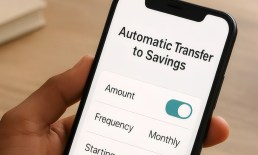The last few holiday seasons, from a retail sales point of view, have been a bit … lackluster. From 2014 to 2016, there was a visible consumer bump during the holiday season, according to First Data’s annual holiday shopping report. But, looking at the data, those bumps were either very muted, like they were in 2014 and 2016, or they were very inconsistent, as they were in 2015 – when there was a strong bump during the Thanksgiving/Black Friday weekend, which was preceded by an unusually weak pre-holiday spending period and followed by an unusually sluggish post-Thanksgiving and mid-holiday shopping season.
But this year, the story is quite a bit different. In fact, according to First Data’s SVP of competitive intelligence and data analytics, Glenn Fodor, it’s a bit more, well, merry.
“Growth continues to be much stronger this year, no matter which way you slice it, than it has been in previous years,” Fodor told Karen Webster in a recent chat about First Data’s annual SpendTrends holiday shopping report.
And not only has the growth been strong, Fodor told Webster, it’s also been consistent all season and across all points.
“You can look at the strong performance on Black Friday/Thanksgiving,” Fodor said. “That was its best year since 2015, with an 11.9 percent bump on the weekend. But unlike 2015, when that holiday shopping weekend [saw a] 10.6 percent jump in sales, that bump came at the cost of the rest of the season. We haven’t seen that this year.”
Instead, he said, the data reflects high spending across the board. The pre-season was up 5.7 percent, the first time since 2014 that bump has exceeded 5 percent. The post-Thanksgiving period was up 11.7 percent, nearly doubling the 5.6 percent growth observed last year. And though growth did slow a bit in the mid-season period that ended Dec. 12, the 6 percent increase was more than double the 2.7 percent logged in both 2014 and 2015 – and is still well ahead of the 3.7 percent growth observed last year.
Advertisement: Scroll to Continue
“This season people are just spending more, that’s the long and the short of it,” noted Fodor. “The pre-season didn’t steal from the holiday season, and the holiday season wasn’t needed to make up for a weak pre-season.”
Changing Trends
How and where people are buying is also shifting, Fodor told Webster, in ways that are encouraging, though they might not seem so on the surface.
Take, for example, eCommerce order sizes, which actually fell by 4.7 percent during the Black Friday weekend, and have remained in negative growth territory for the entire season, according to First Data.
Those figures, however, tell a more interesting story, particularly when combined with the 18.5 percent pick-up in transaction volume that eCommerce has also logged during the holiday shopping rush.
“This reflects a good trend for eCommerce, where people are becoming more acclimated to using the channel to buy everyday things,” Fodor said. “Online isn’t just where people go to get deals or buy big items that they don’t need to look at first – it’s now where people buy toothpaste, Tide and deodorant, and that is a very good bedrock to build future growth on.”
But, Fodor noted, the trends have also juiced the sales of some segments much more than others. Building materials, for example, saw gangbusters growth during this entire holiday season (the back-to-back hurricane disasters during the fall likely did not hurt those figures much), while sporting goods and apparel continue to struggle and see ticket growth in the red.
Where consumers are spending is also changing.
In 2014, eCommerce sales represented about 14 percent of Black Friday spend, and about 16 percent of the post-Thanksgiving period spend. As of 2017, eCommerce was 29 percent of the dollars spent during both the holiday and post-holiday period.
“What we are seeing as we look at the particular segments is that there are going to be the haves and the have-nots when it comes to physical retail,” Fodor emphasized. “Add to that we are seeing more eCommerce players taking the opportunity to go physical – brands like Warby Parker and, of course, Amazon with the Whole Foods acquisition. Plus, we are also seeing brands blend those channel lines – Home Depot is doing a massive amount of business taking orders online, but is fulfilling 60 percent of them in the store. Or Starbucks, with over 20 percent of its orders now coming in through order ahead.”
What’s Next
When asked if he wanted to make a prediction for what’s yet to come, Fodor offered a framework for examining what’s likely to happen moving forward.
The holiday shopping season has been defined by three macro-factors that have always driven its performance: the economy, employment and the weather.
“If you think about it logically, the consumer economy is strong, the economy is approaching full employment – and the weather has finally been appropriate, not too hot and not too cold,” Fodor pointed out.
He remarked that those macro-factors look solid for the time being, and are likely to continue as tailwinds for the shopping season.
“I haven’t seen anything that is going to knock the wind out of those sails in the immediate future. The good times are rolling.”
Doesn’t get much merrier than that.




